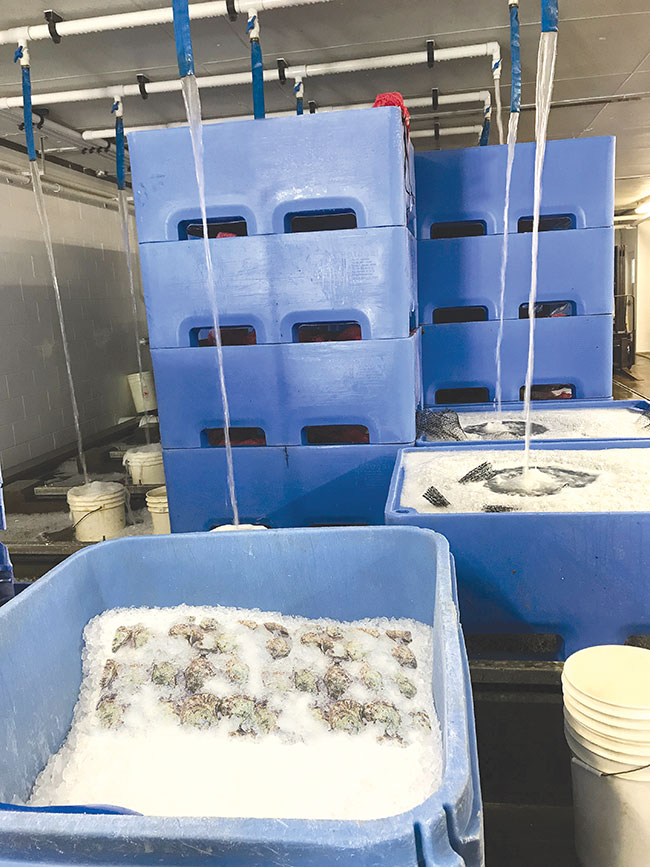
A mix of methods work best in controlling Vibrio
January 22, 2020
By Ruby Gonzalez
 Study stresses role of unbroken cold chain in controlling Vibrio in oysters Credit: Liza Mayer
Study stresses role of unbroken cold chain in controlling Vibrio in oysters Credit: Liza Mayer A new study reinforces what some oyster farmers may think is common sense in food safety: using ice slurries or layered ice for cooling oysters combined with refrigeration at post-harvest is more effective in controlling the growth of Vibrio bacteria than using each method on its own.
Vibrio causes food-borne illnesses in people who eat raw or undercooked shellfish.
The United States has Vibrio Control Plans in place to help farmers mitigate risks associated with the bacteria. It includes time and temperature (10 °C or 50 °F) requirements for post-harvest processing and maintaining an unbroken cold chain.
The most critical windows in which to control the growth of Vibrio bacteria in the supply chain are immediately after harvesting and during post-harvest processing, researchers emphasize.
They said it is crucial to ensure that Hazard Analysis and Critical Control Point (HACCP) plans are being followed and are working appropriately to reduce Vibrio bacterial growth caused by time and temperature abuse.
“Use temperature sensors within your facility and in shipments one-up and one-down in your supply chain to verify that procedures and practices are working properly and are in compliance with food safety guidelines,” said the research team behind the study, “Performance of cold chains and modeled growth of Vibrio parahaemolyticus for farmed oysters distributed in the United States and internationally.”
But the responsibility to make food safe does not only fall on farmers and processors, the team said. The government and the industry have roles to play. They recommend developing guidelines for the shellfish industry regarding best practices for domestic and international airfreight shipments and developing tools to assist shippers in making packaging decisions.
“One option is an online calculator where shippers could manipulate input variables to determine what combinations of variables would meet oyster temperature criteria during shipping,” the researchers said.
Advertisement
- Contingency planning key as political unrest finds its way to aquaculture operations
- Algicides work better in managing off-flavors in catfish





